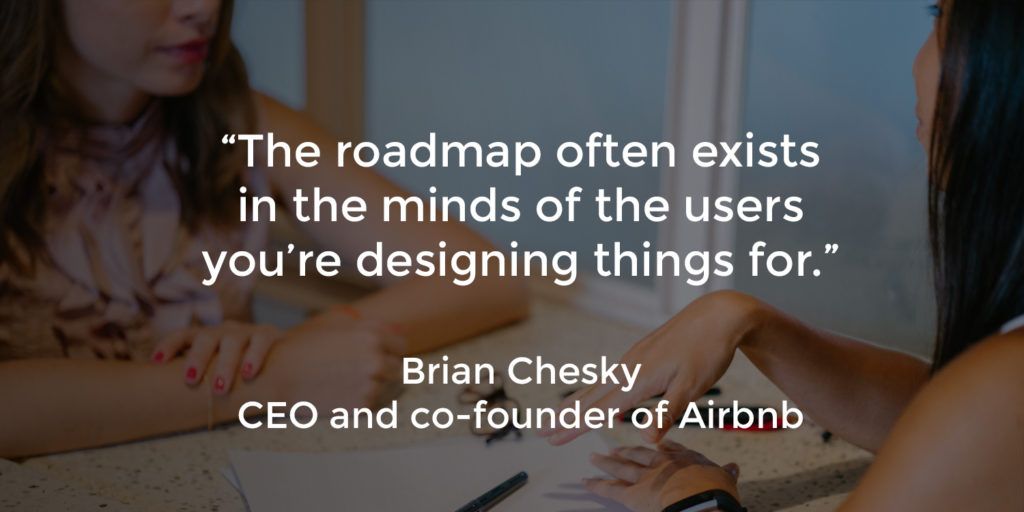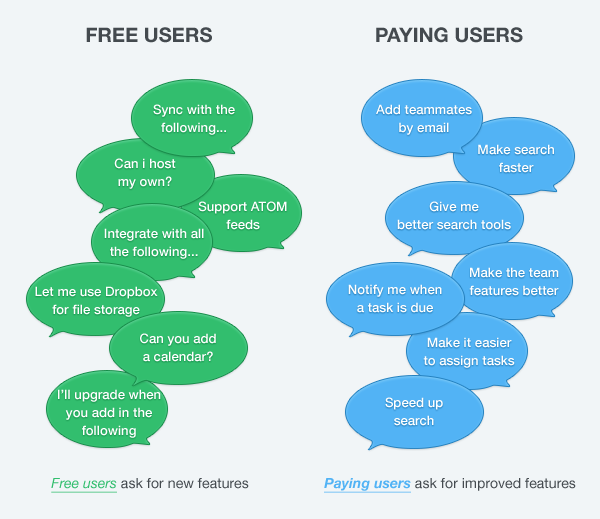Using User Research as a Pre-Product-Market Fit Tactic
 Rana Mumtaz
Rana Mumtaz
So you have an idea. You have felt the pain, or you see whitespace that you think no one is thinking about. You decide to solve the problem. You bring together a small passionate team and round up a few friends to fund you. You get started on the journey of building the product, you have some signals from the market that there is a need for the product. How do you build an MVP that is usable to your target users? Well, the answer lies in thorough user research.
Why User Research Makes a Difference
Brian Chesky of Airbnb stated on the Masters of Scale podcast that your “roadmap exists in the user’s minds.” It is your job as an entrepreneur to unlock that roadmap. Brian was meeting with a host in the middle of winter to take pictures of his apartment. As Brian and his co-founder were leaving, he turned and asked the host if they can help in any other way and the host comes with a binder of feedback for Brian.

That was an incredibly passionate host who wanted Airbnb to succeed, but if Brian hadn’t asked, that feedback might never have been shared. It was listening to these early adopters is what made Airbnb a high-growth company.
Conducting Effective User Research
User research is not easy, but the number one issue is finding users who are willing to give you their time. You can solve this issue by going to your friends and family network and work hard to build relationships. I highly recommend this technique, since if you can’t find people to give you their time to talk to you then perhaps they are not going to want to pay for a product. So go after them and find them, they exist out there especially if you have experienced it yourself.
Once you find a set of users, let’s assume you find a dozen really interested users, how do you conduct research? Let’s look at another example of user feedback in action to understand some of the do’s and don’ts of user research.
Navigating User Feedback
Image Source: TINT

Your goal as an entrepreneur is to understand the user as deeply as you can. This includes all their pain points around the problem you are trying to solve. How do you do it?
Diana Tobey, a Business Designer at IDEO, recently shared a story about how her team researched a project that was focused on improving the experience of taking prescription medications. The IDEO project team had a hypothesis that older patients might have a harder time opening the standard pill bottle. However, while conducting an in-person interview with an older patient, the answer was a resounding no. Perplexed, the IDEO team asked the research participant to show them how he opened his pill bottles. He led them to his kitchen where he used a deli slicer to slice off the tops of his medication bottles. An extreme workaround which highlighted that the problem was real, and in need of a solution.
Dos:
- Meet users in person and observe them in their natural habitat and watch them perform their jobs.
- Ask them questions like what is the biggest pain point, not just take their answer but ask them to show you how they perform the job
- Look for workarounds and ways a user is solving the problems to get the Jobs done. The idea is to uncover things that they may consciously know and express as well as things that they may be unaware of and are subconsciously solving via workarounds.
- Ask for more time from those who are passionate, perhaps for prototype testing or to sign-up as beta testers.
Don’ts
- Do not ask leading questions. Questions with “yes” or “no” answers or questions that imply too much about your intended action can skew the responses you receive. For example:
- “If I built this would you want it?”
- “Do you like this product – yes or no?”
- “Is this a problem you encounter?”
- Don’t ask for solutions either. Henry Ford would say that if I asked for a solution to my users they would have asked me for a faster horse.
- Don’t patronize the users, they are your users so have empathy for their problems.
- Don’t use surveys as a proxy for user research, in an early stage as questions can lead users to a binary answer. If you do send surveys to make sure to ask a question to the users on whether they would like to be contacted, this will allow you to ask the deeper “the why” questions.
Understanding Your Space
Time and time again investors favor entrepreneurs who have spent time in the problem space and understand user’s needs more deeply than anyone else out there. They are looking for entrepreneurs to do their leg work in the problem space. They want entrepreneurs who can build products by being extremely scrappy and resourceful but be extremely clear about the “who” and the “why”. That level of clarity only comes from thorough user research.
Punit, an ex-Google VP, decided to build products for healthcare space. He spent a year and a half just in the problem space. He met with all the stakeholders, nurses, doctors, hospital admins, ops staff, triage folks, and patients. He uncovered several problems, he then honed in on a problem that he decided to solve: improving the notes that doctors take during patient visits. He and his team built Suki, an AI transcription service that helps doctors take accurate notes so they don’t have to rely on memory to take notes about a patient. Suki has raised $20M in funding and grown now to over 50 employees.
The Secret to Effective User Research? Time
Ultimately, effective user research can be boiled down to one key tenet: spend time with your users. Prioritizing face time with them, get deep into the weeds to learn what their days look like, how they solve problems, and where you can make the most impact.
There’s no good shortcut to understanding your users. But with some thoughtful conversations and an open mind to feedback, user research can help you build a product that solves a problem, and message that product in a way that helps users see its value more directly.
Rana is a product growth leader experienced in growing KPIs by 2 – 10X. She has over 15 years of experience in technology, product growth, strategy, and analytics. Her experience includes B2C, B2B SaaS, and AI machine learning products. Rana holds an MBA from Wharton School, University of Pennsylvania and an M.S. in Engg. from Drexel University.
Subscribe to Heavybit Updates
You don’t have to build on your own. We help you stay ahead with the hottest resources, latest product updates, and top job opportunities from the community. Don’t miss out—subscribe now.
Content from the Library
EnterpriseReady Ep. #36, Betting On Infrastructure with Shannon Williams of SUSE
In episode 36 of EnterpriseReady, Grant speaks with Shannon Williams of SUSE. They unpack Shannon’s many years working with...
Early Stage Positioning for B2B Startups with Justin Warren
Justin Warren discusses how to avoid pursuing the wrong approaches to marketing and product development and instead accelerate...
To Be Continuous Ep. #23, Using Continuous Delivery To Find Product/Market Fit
In this episode of To Be Continuous, Edith and Paul discuss how you should use the principles of Continuous Delivery to find...